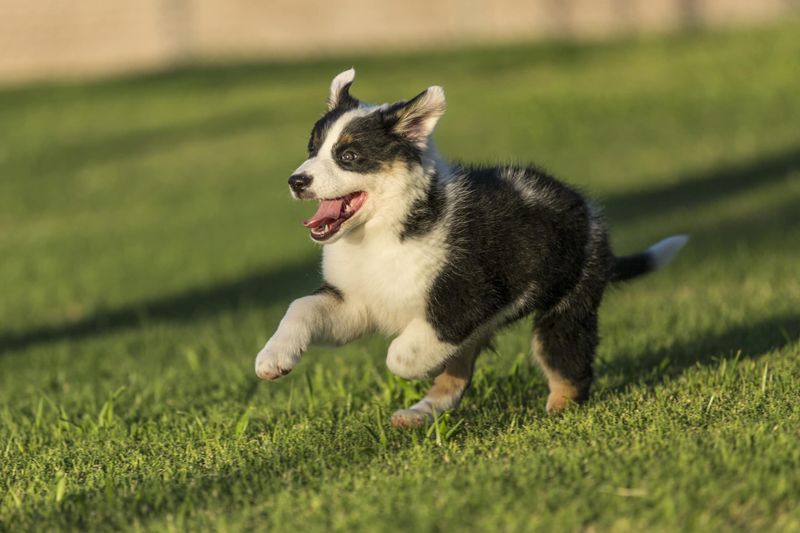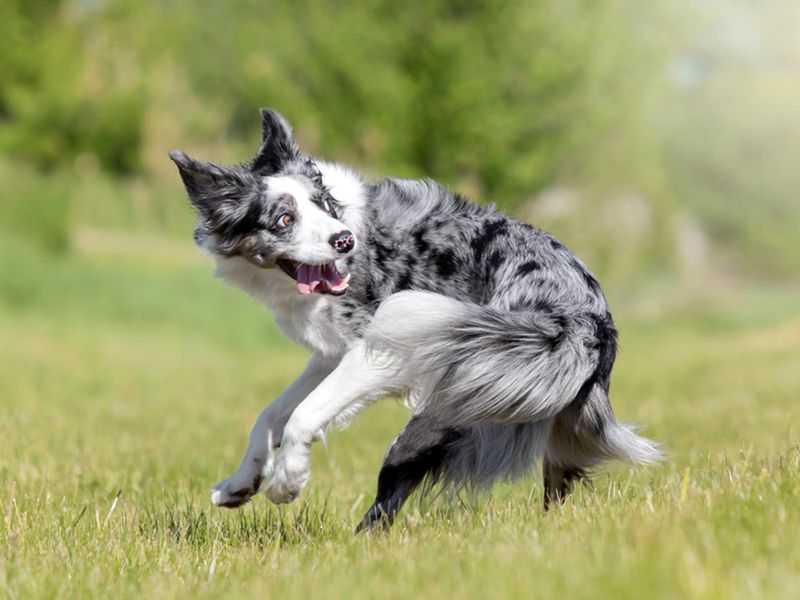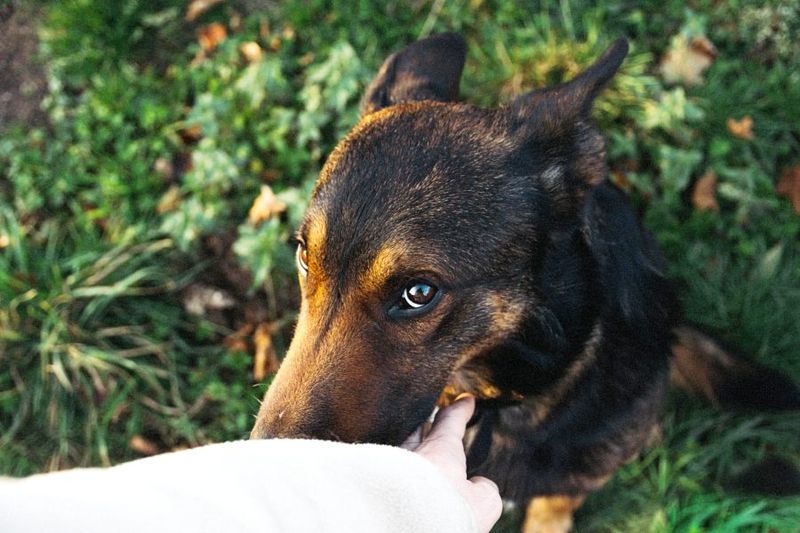15 Unusual Signs Your Dog Could Have A Personality Disorder

Our furry friends can experience mental health issues just like humans do. While typical dog behavior often seems quirky or funny, some actions might signal deeper psychological problems.
Recognizing these unusual signs early could help your pooch receive proper care and treatment before the issues worsen.
1. Shadow Chasing Obsession

Dogs that relentlessly chase shadows or light reflections might be exhibiting signs of compulsive behavior disorder. This isn’t just playful curiosity – it’s an inability to stop even when exhausted.
These pups often ignore food, water, or your calls while locked in their obsessive pursuit. If your dog seems possessed by moving lights or shadows, veterinary behaviorists can help break this unhealthy fixation.
2. Extreme Reaction To Household Changes

Moved the couch? Added a new lamp? Normal dogs might investigate, but dogs with anxiety disorders can completely melt down over minor environmental changes.
Watch for excessive panting, hiding, or refusing to enter rooms with new arrangements. Some sensitive pups may even stop eating or develop digestive issues when their surroundings shift. This heightened sensitivity often points to generalized anxiety disorder.
3. Fence Running Until Paws Bleed

Border patrol gone wrong! Dogs who run along fences until their paws are raw and bleeding aren’t just being territorial – they’re showing signs of obsessive-compulsive disorder.
The behavior starts normally but escalates to harmful levels where the dog can’t stop despite injury. Look for worn paths along boundaries and bloodied paws. This self-destructive pattern requires professional intervention before physical damage becomes severe.
4. Tail-Chasing That Never Ends

Occasional tail-chasing can be cute, but when your dog spins in circles for hours, something’s seriously wrong. This behavior indicates possible obsessive-compulsive disorder when it interferes with normal activities.
Dogs with this issue often miss meals and sleep opportunities because they’re too busy spinning. Some even injure themselves by biting their tails during these episodes. Bull terriers and German Shepherds are particularly prone to this troubling behavior.
5. Aggression Only Toward Specific Colors

Does your dog act perfectly friendly until someone wearing red walks by? Color-specific aggression isn’t random – it may indicate past trauma or an unusual processing disorder.
Dogs with this issue might lunge at anyone in blue shirts or bark frantically at yellow objects. The trigger color consistently provokes the same reaction. This unusual pattern suggests your dog has formed negative associations that require specialized behavior modification techniques.
6. Refusing To Walk On Certain Surfaces

Surface sensitivity becomes concerning when it’s extreme and inconsistent. A dog that suddenly refuses to walk on tile floors they previously traversed without issue might be developing sensory processing problems.
Look for trembling, freezing, or dramatic attempts to avoid specific textures. Some dogs will even injure themselves trying to escape certain surfaces. This isn’t simple preference – it’s panic that signals possible neurological issues or anxiety disorders.
7. Inappropriate Attachment To Objects

Beyond normal toy preferences, some dogs develop unhealthy fixations on random items. A dog that guards an empty water bottle or old sock with aggressive intensity isn’t being cute – they’re showing attachment disorder symptoms.
These dogs become severely distressed if their “special object” is moved or touched. They may stop eating or sleeping to guard it. This behavior often stems from early weaning or inadequate maternal bonding during crucial developmental stages.
8. Extreme Fear Of Specific Sounds

While many dogs dislike thunderstorms, a dog with sound-related anxiety disorder might completely shut down at the beep of a microwave or click of a pen cap.
These pups aren’t being dramatic – their brains process certain frequencies as genuine threats. You’ll notice dilated pupils, uncontrollable shaking, and possibly loss of bladder control. Sound phobias often worsen without treatment and can eventually generalize to multiple triggers.
9. Self-Mutilation When Alone

Discovering your dog has chewed raw spots on their legs or tail while you were gone isn’t just separation anxiety – it could be self-mutilation disorder. This extremely concerning behavior goes beyond typical destructive habits.
Dogs with this condition direct harm toward themselves, creating wounds that can become seriously infected. Look for patterns of injury that occur specifically during alone time. This dangerous behavior requires immediate veterinary intervention and possibly medication alongside behavioral therapy.
10. Inability To Break Eye Contact

Most dogs naturally look away after brief eye contact, but dogs with certain neurological issues may stare unblinkingly for uncomfortable periods. This isn’t normal attentiveness – it’s a concerning inability to read and respond to social cues.
Prolonged, intense staring often makes other dogs extremely uncomfortable and can provoke aggression. If your dog seems “locked in” when making eye contact with you or others, they may have social processing difficulties requiring professional assessment.
11. Sudden Personality Changes At Specific Ages

A friendly puppy that becomes aggressive at exactly 18 months might be experiencing canine cognitive developmental disorder. These dramatic personality shifts occur at predictable ages when certain brain changes normally happen.
Unlike gradual behavioral evolution, these changes appear almost overnight. One week your dog plays normally at the park; the next, they’re terrified of other dogs. This pattern suggests disrupted neurological development that veterinary neurologists and behaviorists should evaluate.
12. Refusing Food Then Gorging Dangerously

Food refusal followed by frantic overeating isn’t just picky eating – it could indicate an eating disorder similar to human bulimia. Dogs with this pattern often refuse meals for days, then consume enormous amounts in minutes.
This dangerous cycle can cause bloat, a potentially fatal condition. Watch for anxiety around mealtimes and food-related rituals like moving kibble to specific locations before eating. Thankfully, structured feeding protocols and sometimes medication can help regulate these concerning patterns.
13. Inappropriate Mounting Behaviors

Occasional mounting is normal dog behavior, but when it becomes frequent, indiscriminate, and impossible to interrupt, it signals impulse control disorder. Affected dogs mount people, other animals, and even inanimate objects compulsively.
They often appear glazed-over during these episodes and resist redirection. This isn’t about dominance or sexual behavior – it’s a neurological issue where the brain can’t regulate normal impulses. Early neutering rarely solves this problem, but behavioral modification with medication support often helps.
14. Hallucinatory Behavior

Dogs that snap at invisible flies or bark at empty corners might be experiencing hallucinations. While sometimes caused by medical issues like seizures, persistent hallucinations can indicate canine cognitive dysfunction or psychosis.
Affected dogs react to things you cannot see – following invisible movements with their eyes or jumping away from “phantom touches.” Senior dogs are most commonly affected, but younger dogs can develop these issues too. Neurological evaluation is essential, as medication can significantly improve quality of life.
15. Exaggerated Startle Response

Does your dog practically jump out of their skin when a leaf falls? Hypervigilance and extreme startle responses suggest post-traumatic stress disorder, especially in rescue dogs.
Unlike normal caution, these dogs react catastrophically to minor stimuli. Their bodies flood with stress hormones at the slightest surprise. You’ll notice muscle tremors, dilated pupils, and rapid breathing during episodes. Recovery takes much longer than normal, sometimes hours after the triggering event has passed.






